Here’s an idea for a TV show: a young cop battles corruption in the big city, surrounded by colorful villains and dirty cops, leaving him unsure of whether or not he can even trust his own partner. Suddenly, a high-profile case comes his way when the city’s wealthiest couple are shot to death in a random alley, leaving behind their poor young son who witnessed the whole thing. At the crime scene, the young cop makes a vow to the traumatize kid: he will find his parent’s killers.
That cop? Jim Gordon. That newly orphaned kid? Bruce Wayne. The city? Gotham!
What a hook! It’s strong enough that Fox doled out a major commitment to Warner Bros.-TV to land Gotham, which is now set to debut September 22nd and will soon be the subject of a media saturation campaign making it very hard to escape the show’s commercials. However, Fox is not the first network to have been swayed by the hook of a show placing familiar Batman characters in unfamiliar territory. Back at the dawn of the century, the now-defunct WB Network was making the necessary moves to roll out a new show depicting the immediate years before Bruce Wayne decided to become Batman. Then studio politicking and general bad-timing kicked their ass, and instead of Bruce Wayne we got Smallville and Birds of Prey.
Here’s how that happened:
THE PITCH
Mike Tollin and Brian Robbins were not the guys you’d necessarily expect to be behind a Batman show. By 1999, their production company Tollin/Robbins Production had four shows running on Nickelodeon, the most recent of which starred a young Amanda Bynes in the sketch/variety The Amanda Show.

A pre-batshit crazy Amanda Bynes
Tim McCanlies wasn’t the guy you’d expect to be responsible for a Batman show, either. By August 1999, his most recent screenwriting credits included Iron Giant and direct-to-video sequel Dennis the Menace Strikes Again. However, his agent approached Tollin/Robbins the weekend that Iron Giant opened, and they took a meeting to hear his pitch for a new show. According to legend, he described a show about a wealthy young man on the cusp of coming of age and inheriting an empire, relying on his grandfather-like butler and a young, idealistic cop for moral guidance. Tollin/Robbins were intrigued, but their minds were blown when McCanlies played his trump card: the young man was Bruce Wayne, and the series would be about his journey to becoming Batman.
Tollin/Robbins were floored, taking it straight to Warner Bros.-TV, who commissioned a pilot script. There hadn’t been a new Batman film at that point in a couple of years, and this TV show could help revitalize the franchise by doing something not even Tim Burton had ever cared to try: focusing on Bruce Wayne instead of the villains.
THE PILOT

They were going for a kind of Giles/Buffy thing with the way Alfred and Bruce would interact
Bookended (as all of the episodes would be) with future scenes of an older, Batman-era Alfred bemoaning “How did it all…come to this?”, McCanlies’ pilot script was centered around whether or not Bruce Wayne would sign a legal document to authorize the Waynecorp trustees to continue running the company in his absence. In the set-up, he’s been gone from Gotham for 12 years, traveling the world, becoming an expert in martial arts, and unwittingly building an aura of mystique which has made him into an international figure with a media profile akin to a boy band or English nobility. He is needed back in Gotham to sign the document, yet he actually starts the pilot behind the bars of a London jail cell, bailed out by an apologetic Alfred, who informs the police superintendent, “Master Bruce has ‘issues’.”
Upon his return to Gotham, Bruce visits the spot of his parents’ death in Crime Alley only to quickly be attacked by thugs, each of whom he easily dispatches much to Alfred’s chagrin, who much prefers that Bruce work out his issues from a psychiatrist’s couch instead of with his fists. Upon attempting to turn the thugs in to the authorities at the police department, Burce is diverted to Detective Gordon with an assist from Gordon’s 13-year-old daughter Barbara (aka, Batgirl), who was there to bring her dad dinner.
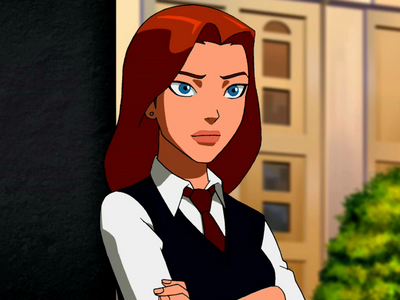
Oh, and young Barbara would have a wee bit of a crush on Bruce
When Bruce hesitates to sign the trustee papers at Waynecorp he just happens to run into an old childhood friend, Lucius Fox, now an intern at Waynecorp. When Alfred realizes that if Bruce should happen to die before his 18th birthday Waynecorp would come under complete control of its current trustee they have the legal documents examined by Bruce’s old buddy Harvey Dent, fresh off his first year of a law school. Described as rich, spoiled, and selfish with a knack for always trying to get Bruce to lighten up, Harvey would just so happen to be hosting a costume party when Bruce shows up, thus introducing his younger sister, Susan Dent (a creation of the show), and Selina Kyle, dressed up as (you guessed it) a cat (well, technically a tiger with long claws).
The rest of the pilot would be devoted to multiple failed attempts on Bruce’s life, e.g., trapped with Jim Gordon in a room quickly filling with water, shot at by two unmarked sedans during a car chase, as well as establishing Susan as a potential love interest. It would all culminate with Bruce covertly assisting Gordon with a crime bust at Wayne Chemicals, the thrill of the fight giving him the feeling that he’s found his calling in life before coming home to a surprise birthday party at Wayne Manor. For complicated legal reasons, Bruce turning 18 means his rival trustee can no longer simply wrestle away control of Waynecorp by killing him. So, Bruce tosses the contract into the fire, and informs everyone he intends to stay in Gotham to see if he can make it a better place.
THE CAST
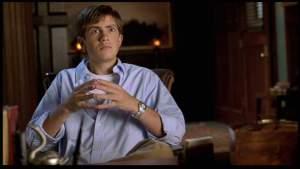
Trevor Ferhman – He could have been Bruce Wayne
The show was shut down before it ever got to the casting stage, but if it hadn’t they had already discussed the actors they would target for some of the roles. They were high on Trevor Ferhman or Shawn Ashmore for Bruce Wayne, and…
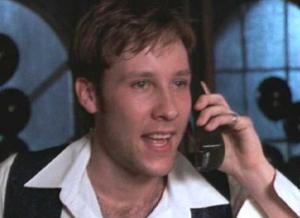
Michael Rosenbaum for Harvey Dent
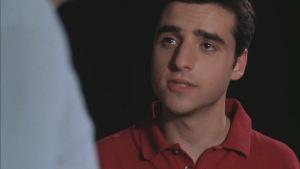
David Krumholtz for Jim Gordon
THE 5-YEAR PLAN
Beyond simply writing the script McCanlies also put together a “show bible,” i.e., a 5-year plan laying out the general trajectory of the show. By the end of the first season, Bruce would discover the underground cavern beneath Wayne Manor that we all know would become the Batcave, and by the end of the fifth season he would finally don the infamous cape and cowl.
Along the way, Bruce would meet Clark Kent, as a 16-year-old aspiring journalist visiting Gotham City for a WayneCorp sponsored conference for high school journalists. The Joker would be a presence, though beyond starting out as a Sam Kinison-like comedian it’s unclear what they had planned for him. It’s also unclear when or if Harvey Dent would become Two-Face.
Bruce’s initial love interest would be Harvey’s gorgeous younger sister Susan Dent, who would actually work at a Gotham City Youth Shelter thus serving as a window into the lives of the people Bruce eventually vows to protect. Vicky Vale (as a young TV gossip reporter), Selina Kyle (as some kind of “consultant,”) and Harleen Quinzel (as a young psychology student) would all eventually join the cast, every one of them positioned as a potential love interest for Bruce, even Harley Quinn.
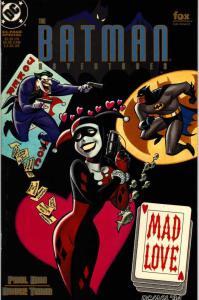
Harley Quinn as a love interest for Bruce Wayne? What in the world would her beloved Mr. J think?
As the seasons progressed, we would see Bruce observing and studying the felons at Arkham Asylum, perfecting all forms of martial arts, trying his hand at legit law enforcement (first with the Gotham City Police Department and then with the FBI) before deciding it wasn’t for him, and basking in the anonymity to be had from wearing a black helmet and leather when racing sleek motorcycles through Gotham City at night.
Bruce would fight a multi-season battle to gain complete control of WayneCorp, and once he won he’d use his company’s resources pretty much exactly as the Christian Bale Bruce Wayne does in the Dark Knight trilogy. Under his control, WayneCorp would win a bid to build the FBI’s computer criminal database, which would clearly come in very handy.
KILLED BY THE X-MEN
As compelling and well-liked as Tim McCanlies’ Bruce Wayne pilot script was, he wasn’t the first one to propose revitalizing Batman via prequel. Warner Bros. already had Frank Miller and Darren Aronofsky hard at work, adapting Miller’s own iconic Batman prequel saga Batman: Year One, which Aronofsky would direct. So, when the TV arm of Warner Bros. put Bruce Wayne into motion for the WB network a turf war broke out, and by January 2000 Bruce Wayne was put on hold while the studio re-evaluated how best to utilize Batman. Then along came Bryan Singer’s first X-Men film, which opened to $54 million and revitalized the comic book movie genre. It would still take another 5 years for Batman Begins to happen, but it was X-Men‘s big biz that caused Warner Bros. to re-commit itself to revitalizing Batman through film, not TV.
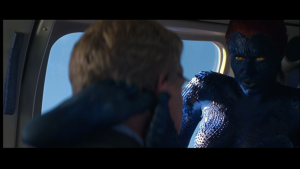
If not for X-Men, would we have had Bruce Wayne instead of Smallville?
Superman, on the other hand, was fair game. They’d been trying to get a new movie going since the early ’90s, but that didn’t seem any closer to happening. Moreover, a prequel TV series didn’t really overlap with any of the ideas they’d discussed for a new Superman movie. So, it was totally cool when Warner Bros.-TV President Peter Roth shot down an unrelated TV show pitch from writers Al Gough and Miles Millar and asked them to take a stab at a “Young Superman” script instead.
This eventually became Smallville, which ran for 10 seasons and probably made those two very wealthy. However, Gough and Millar initially wanted nothing to do with it. There had technically already been a Superman prequel show, the oft-forgotten Superboy, which they regarded as being impossibly cheesy. Their famous edict that Smallville would be a show with “no cape, no flying” was simply a reaction to their hatred of Superboy. Initially refereed to as The Young Clark Kent Project, Smallville was formally announced in September of 2000, and debuted on The WB a little over a year later.
Tollin/Robbins Productions did end up as the production company for Smallville, and after Smallville became an instant hit Gough and Millar pitched an idea for a companion series centered around Bruce Wayne but were turned down. Tollin/Robbins Productions did finally get its Batman show in 2002 with Birds of Prey, the compromise being it was set in the future and focused on Batman’s supporting characters thus providing little overlap with the film world. It was canceled after 13 episodes.
CONCLUSION
Smallville was at one point an incredibly strong show, anchored by breakout performances by Michael Rosenbaum as Lex Luthor and Allison Mack as Chloe Sullivan. Smallville didn’t stay that way, though, descending into low-budget, camptastic insanity in its latter seasons. So, it’s tempting as someone who prefers Batman over Superman to rejoice that we now do not have 10 seasons worth of Bruce Wayne episodes to look back on with regret. However, that assumes Bruce Wayne would have been just as big of a ratings hit, which is no guarantee. Plus, Smallville‘s no capes/no flying edict turned from a strength to a shackle around the show’s neck the longer it dragged on as it prolonged the answer to the obvious question: Why isn’t he Superman yet? Bruce Wayne wouldn’t have likely operated under the same rules.
Either way, the result is that WB held off and let Christopher Nolan do the Bruce Wayne origin story to perfection which is now leaving Fox to force us to care about a pre-teen Bruce Wayne and a not-yet-Commissioner Gordon in Gotham.
Sources:
Kryptonsite.com, Julian Darius’ Improving The Foundations: Batman Begins From Comics to Screen.

